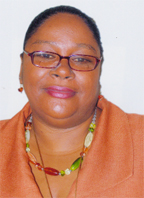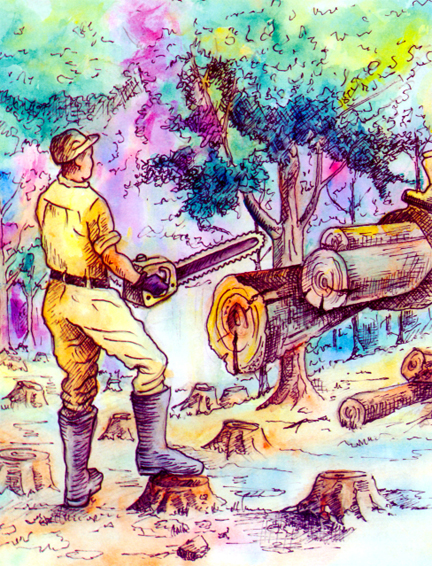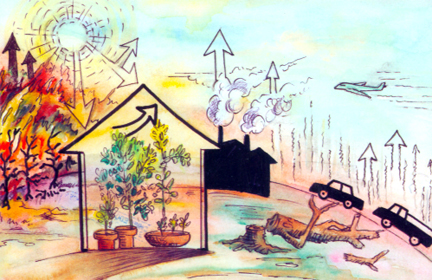Paulette Bybie and Denise Symmons
Infusing Climate Change into the schools curriculum is one of the important challenges that the country’s education system will have to confront in the years ahead as Guyana, the region and the international community as a whole seek to pay greater attention to the impact of Climate Change on life as we know it. Let’s Learn About Climate Change is, as the title suggests, a primer on the subject. A highly informative 37-page booklet, it was written by Paulette Bynoe (PhD) and Denise Simmons (MSc) of the School of Earth and Environmental Sciences at University of Guyana and beautifully illustrated by Philbert Gajadar. The authors say that the booklet is intended to create an increased awareness and to enhance knowledge of climate change – a global environmental threat.

Dr Ulric O’D Trotz, Science Adviser, Caribbean Community Climate Change Centre (CCCCC) in his foreword enjoins that Climate Change has emerged as a major developmental problem with the potential of railroading the sustainable development aspirations, not only of people in the Caribbean, but of people everywhere in both developing and developed countries worldwide.
The eight (8) topic captured in this booklet cover all of the basic interrelated concepts on Climate Change. These are presented in a highly reader friendly style. Each concept is gradually developed using a multi sensory approach as the reader comes face to face with colourful detailed illustrations, graphs and well labelled diagram. The booklet is interspersed with provocative questions, easy to do experiments, promptings to stimulate further group discussions and quiz challenges. Each new scientific term is explained and developed. Graphic illustrations such as the production of bio-diesel from sugar cane represent creative ways of getting the attention of the reader.

This booklet can be useful in exploring the issue of Climate Change with even very young children and yet challenges adults. The illustrations can be used as picture study to develop the concept with young children. Each chapter calls us to account for our stewardship and gently nudges us into lifestyle changes that will impact positively on the environment. These changes are at times simple enough for a child to commit himself/ herself to a better way of living and at other time challenging even for a nation. It captures the solution to Climate Change and reinforces that each one has an integral role to play and must band together with others so as to create an exponential growth in the lifestyle changes. The authors bring Climate Change home to every household in Guyana as they make the connections between Climate Change and recent weather patterns in Guyana, resulting in extreme drought as well as heavy and prolonged rainfall. The authors stayed clear of preaching doom and gloom, on the other hand, they pointed each of us in the direction of making the right choices which will help to reduce this growing global problem. It is enlightening to read of the efforts that Guyana has already made towards combating Climate Change.
 This booklet has been published at a most opportune time as Guyana is perched to present it Low Carbon Development Strategy to the world in Copenhagen in December 2009. It is an opportunity for all Guyanese children to learn, grow and change so that together we may stem the tide of Climate Change. It is therefore incumbents on all Guyanese to embrace the lifestyle changes so that the world we bequest to our children will be worth passing on.
This booklet has been published at a most opportune time as Guyana is perched to present it Low Carbon Development Strategy to the world in Copenhagen in December 2009. It is an opportunity for all Guyanese children to learn, grow and change so that together we may stem the tide of Climate Change. It is therefore incumbents on all Guyanese to embrace the lifestyle changes so that the world we bequest to our children will be worth passing on.
Melcita Bovell (BEd, MA (London).)





